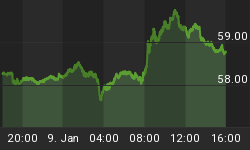This is a summary of my Post-CPI tweets today. You can follow me @inflation_guy.
- Core CPI +0.146%, just barely missing the soft +0.2% people were looking for. But y/y still rose to 2.0%.
- that dip in core is over - next several months have easy year-ago comps.
- Services inflation +0.3%, as is Housing. It's only core commodities that's a drag now (+0.0% after -0.1% last month).
- Rents (both primary and OER) rose +0.2% and the y/y rise matches core inflation at 2.1%. The inflation-sapping bust is over.
- unrounded y/y core CPI: 1.988%.
- Y/Y core services inflation is 2.5%. Y/Y core goods is +0.7%. It was services that dragged core down in 2009-10. That's over. [Note: see Chart, source BLS, below]
- accelerating subgroups: Housing, Apparel, Transport, Recreation (66.2%). Decelerating: Food&Bev, Other (20.2%). Med Care & Educ/Comm unch.
- Both primary rents (+2.7% y/y) and OER (+2.1% y/y) are accelerating - by which I mean they are inflating at a faster y/y pace.
- Median CPI from the Cleveland Fed was +0.2%, and the y/y rate steady at 2.3%. The recent disinflation is an illusion.
The first supplementary chart is for core goods and core services. The sum of these two (weighted, of course) is core CPI. As you can see, it was the decline in the core services component (notably housing) that drove the decline in core CPI in the late 'Aughts; the overall core number was temporarily kept afloat by the rise in core goods, but the crisis caused that to collapse as well.

Over the last couple of years, core services have returned to 2.5%, and core inflation is only as low as 2% now because core goods prices have begun to decline again. However, taking a broader view, it appears to me that the disinflation in goods from the early 90s to the early 00s is over and that goods prices are gradually taking a higher track. I've written previously about the possibility that the "globalization dividend" in terms of disinflationary pressures has shown some signs of ebbing. Obviously, should core goods inflation return to the levels it achieved a year ago (2.2% in November and December), overall core inflation would be comfortably above 2% even if core services inflation did not continue to accelerate.
In a non-CPI related note, New York Fed President Bill Dudley said today that the Fed won't be "hasty" to pull back easy money: "If we were to see some good news on growth I would not expect us to respond in a hasty manner." This confirms what we already knew - the Fed is willing to risk letting the inflation genie out of the bottle. Now, faster growth is not actually causal of inflation, as I frequently point out, so not responding to growth is ironically the right strategy, but it's important to consider the reasons he gives for this policy. He is not saying that the Fed will not respond to growth because growth is not something they can affect; what he's actually saying is that (since the Fed believes they can affect growth meaningfully) there is a very high hurdle to tightening even if prices accelerate somewhat further as long as growth remains slow.
So in what I think is the most likely case, continued slow growth with rising inflation, the Fed wouldn't likely start to tighten the screws until core inflation was near 3% (and more importantly, until the economists who are modeling inflation as a function of growth decide they're wrong, and stop forecasting a decline from whatever level we are at today). Since there is a significant delay of at least 6 months from Fed action to any effect on prices, this means that core inflation could easily get comfortably above 3% before any Fed action took effect - and, with the amount of money they'd need to withdraw, and the likelihood that they would start timidly, I have no idea how long it would take for them to stop an inflationary process which, at that point, would have considerable momentum.
So, in summary, this will not be the last uptick we see in core inflation.















